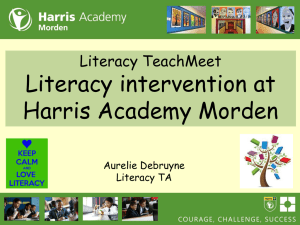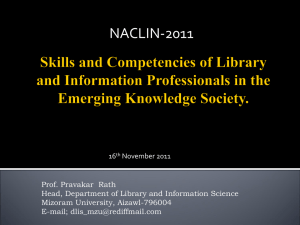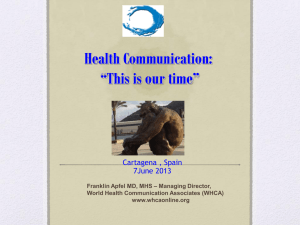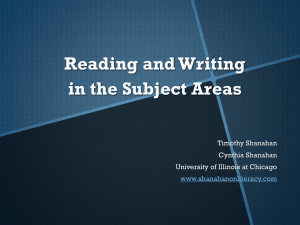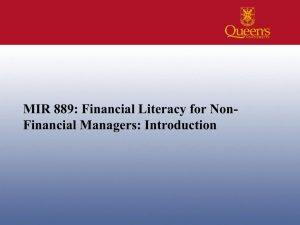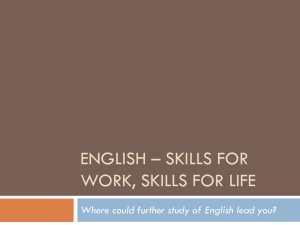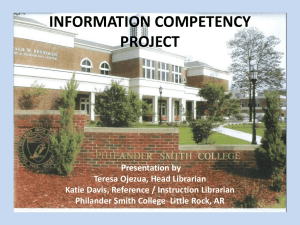Financial Literacy Conference
advertisement
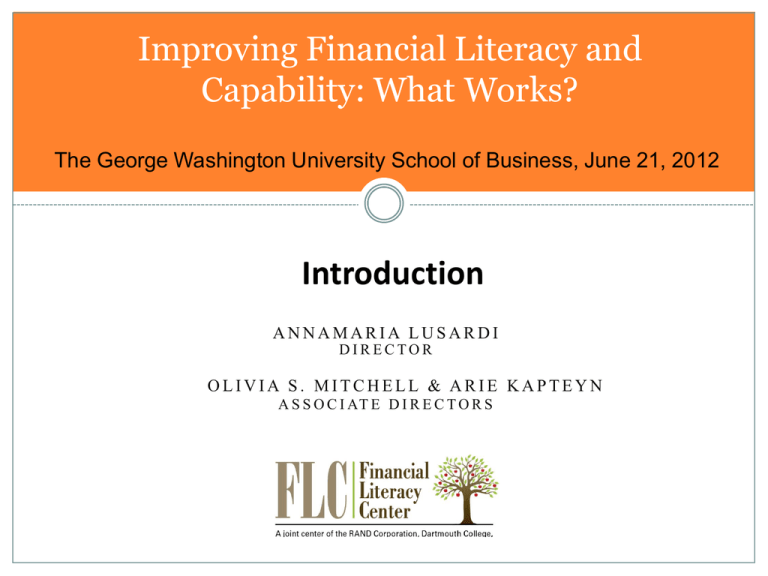
Improving Financial Literacy and Capability: What Works? The George Washington University School of Business, June 21, 2012 Introduction ANNAMARIA LUSARDI DIRECTOR OLIVIA S. MITCHELL & ARIE KAPTEYN A S S O C I AT E D I R E C T O R S FLC: Our Infrastructure Top-notch academics: Center of excellence Multidisciplinary approach: Academics in economics, finance, psychology, marketing, law, health, and linguistic Innovative not-for-profit and for-profit groups: Doorways to Dreams, ideas42, Financial Literacy Group, AEI, NBER Applied Research and Consulting, Mathew Greenwald and Associates Collaborate with thought leaders and institutions in financial literacy: FINRA Investor Education Foundation, NEFE, NYSE Foundation, FRB, OECD, World Bank, TIAA-CREF Institute, Filene Research Institute Collaborate with our other centers: Pension Research Council (Wharton), BeFi and RAND’s centers FLC: What we have done so far • Twenty-nine projects in two years All supported by Social Security • Several of these projects are multi-year ones and were expanded further • We have pursued other big projects in financial literacy connected to these projects Financial Literacy Around The World (8-country comparison) Contribute to National Financial Capability Study and Programme for International Student Assessment (PISA) Financial Literacy Seminar Series, joint with FRB, and FinLit Talks Collaborate with a new museum of saving to promote fin education Some of our projects o Financial education at school and in the workplace o Financial literacy over the life-cycle o Young, middle age, close retirement, after retirement o Focus not only on asset building but also on debt and debt management o Focus on vulnerable groups: o Women, low income, immigrants , disable children o Innovative ways to promote and deliver financial literacy: o Videos, stories, visual tools o Financial literacy games o Financial check-up The importance of data and measurement Very important tool we have: RAND American Life Panel (ALP) • One of the first surveys to provide a comprehensive measure of financial literacy • Because it is an internet panel we can get timely data on topics of interest • We can use it to do evaluation on representative samples We have a passion for data: Health and Retirement Study: Several modules on fin literacy National Financial Capability Study OECD’s PISA 2012 module on financial literacy A framework for financial literacy How to interpret the data? • Need a framework • The framework guided the data collection • Important to study policy implications Theoretical model for financial literacy Financial literacy is a choice variable FLC: Multi-pronged Strategy Educate Eradicate financial illiteracy: One cannot do well in the modern world without being able to read and write financially Simplify Saving and investing are complex decisions Implement Implementation crucial to change behavior Evaluate What works? Focus on cost-effective programs. Today we will discuss what works Example: Project for college and high school students Designing financial literacy modules • Building financial literacy content in college courses • Financial literacy games Celebrity calamity Bite Nightclub Extensions • Use modules for a new program at The George Washington University School of Business • D2D has modified their financial literacy games for a workplace financial education program with Staples • Deliver financial education via a museum A Museum of Saving in Italy A Museum of Saving in Italy A Museum of Saving in Italy A Museum of Saving in Italy A Museum of Saving in Italy, a FinLit Game What have we learned? • Financial illiteracy is widespread Take into account in the design and evaluation of programs • Very large differences in the population One size does not fit all; importance of targeting • Focus on important decisions and teachable moments • Start of job, retirement • Many unexploited delivery channels Need for originality and creativity • Critical importance of evaluation: What works? Also for fine-tuning • Importance of theory to understand the effects of programs and policy We have written a lot: Books, Insights, Reports • Financial Literacy: Implications for Retirement Security Financial Marketplace and the • Financial Literacy Insights • All projects and reports posted on: http://www.rand.org/labor/centers/fin ancial-literacy.html Special Issue of JPEF, October 2011 • Financial Literacy Around the World (FLAT World) • Planning a special issue of Numeracy • American Academy of Arts & Sciences has become interested in fin literacy What made our work and success possible? • Passion, originality, and ingenuity of our teams − Human capital matters • Capacity to deliver on time • Focus on important questions Final thoughts “If you think education is expensive, try ignorance” D. Bok (Former President of Harvard) “Simplicity is the ultimate sophistication” Leonardo da Vinci (1452-1519)
